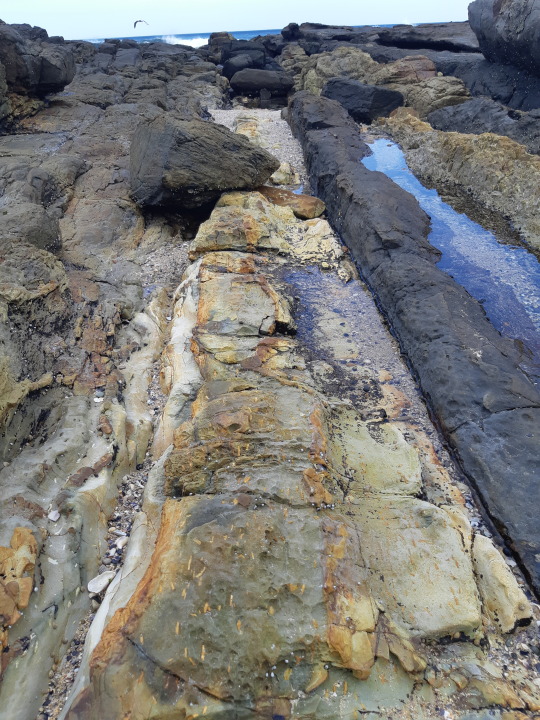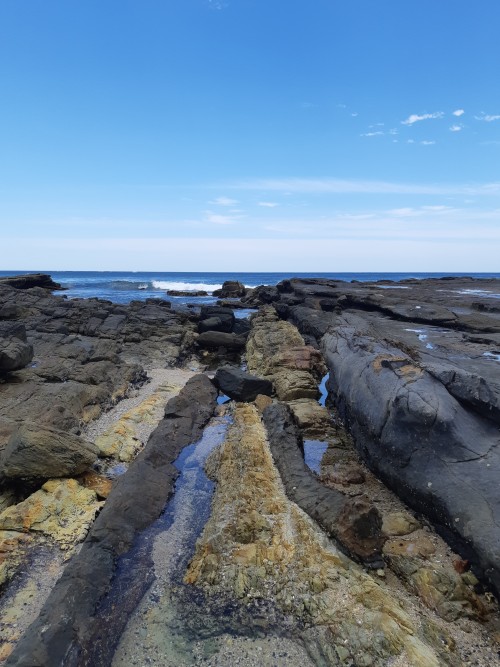#sedimentry
The dark coloured rock is a sedimentary rock and the bright coloured rock is an igneous rock (used to be a magma) which intruded the sedimentary rock. This intrusive igneous rock is called dyke or dike.

This dyke is bright coloured because the minerals that make up this rocks are breaking down to clays due to exposure to water and oxygen. Original minerals in rocks such as this one are usually black and so dykes often appear dark (but, definitely not a rule!). However, when these minerals breakdown they produce clay minerals, which are usually bright coloured.

The white-orange marks that you can see on the close-up image of the dyke used to be minerals that floated in the magma before it turned into a igneous rock. These minerals were called plagioclase, however, now these too have been converted into clays.
You might notice that approximately all these tabular minerals are aligned in one up-down direction. This the tell-tale sign of magma movement which aligned the mineral according to its flow direction. From this photograph you can narrow down the magma movement direction options to either to up-down and towards-you/away-from-you.
Southcoast NSW, Australia
Post link

